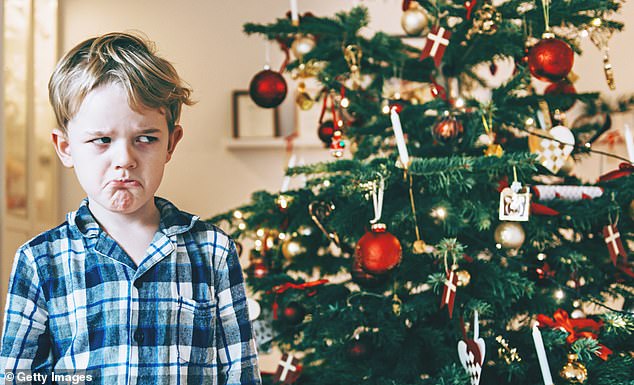Sniffly? It might not be Covid, flu or even a cold… experts say it could be your CHRISTMAS TREE making you feel like death
'Tis the season of runny noses, and many of us will be quick to blame it on colds, flu, or even Covid.
But there could be another cause: your Christmas tree.
That's because real trees can harbor fungi and pollen.
Both are known allergens, meaning that people vulnerable to them may suffer cold symptoms, as well as red, swollen and itchy skin, if exposed.
It can be a particular problem for asthmatics, who may experience flare-ups during the holidays.
Christmas tree syndrome can cause a runny or stuffy nose, sneezing, irritated eyes, coughing, itchy throat and even red, itchy and swollen skin
Pollen can stick to a tree in the spring and hitch a ride home at Christmas, while mold can grow quickly in the cold and damp oasis of a Christmas tree farm.
Additionally, a single tree can contain more than 50 species of mold, with varieties such as Aspergillus, Penicillium and Cladosporium the most likely to cause allergies.
Mold thrives in warm, wet and humid conditions. So once a tree is brought indoors, mold production can skyrocket.
During the first three days indoors, levels are about 800 spores per cubic meter of air, according to Dr. Samuel White, a researcher at Nottingham Trent University who has spent years researching the immune system and allergies.
But after two weeks the toll could rise to 5,000 per cubic meter of air, he told MailOnline.
'They thrive in warm, wet and humid conditions, and their presence is not limited to Christmas trees,' Dr White said.
'These fungi can occur outdoors in soil, rotting vegetation and indoor areas with moisture problems,' says Professor Philippe Wilson, an expert in innovation in medical technologies at Nottingham Trent University.
'While some strains may be harmless, others have the potential to produce mycotoxins, which can be harmful to human health,' he told MailOnline.
Some people are more sensitive to the 'Christmas tree syndrome'.
People with pre-existing allergies, such as asthma or hay fever, are more likely to sniff a slightly moldy tree.
Dr. Adrian Morris, an allergy specialist at the Surrey Allergy Clinic, told MailOnline that taking antihistamines helps relieve symptoms.
However, there are ways to prevent your Christmas from being ruined by mold spores.
Carefully inspecting the tree for mold before bringing it indoors, watering it regularly to prevent drying and mold growth and making sure your home is well ventilated can help prevent the spread of spores, Dr. White said.

After just three days indoors, mold spores can reach 800 spores per cubic meter of air, which is far from normal, experts warn
According to Dr. Morris, sterilizing the tree by “washing it with bleach or Milton” is another way to rid the tree of mold before bringing it indoors and decorating it.
Just investing in a plastic tree helps prevent allergies. But Dr. Morris warns that storing a plastic tree in a damp place can itself cause problems.
Selecting tree varieties with 'lower allergenic potential' is another option, Professor Wilson said.
“Fir trees, such as Douglas and Fraser, are known to produce fewer allergens compared to spruce or pine,” he noted.
